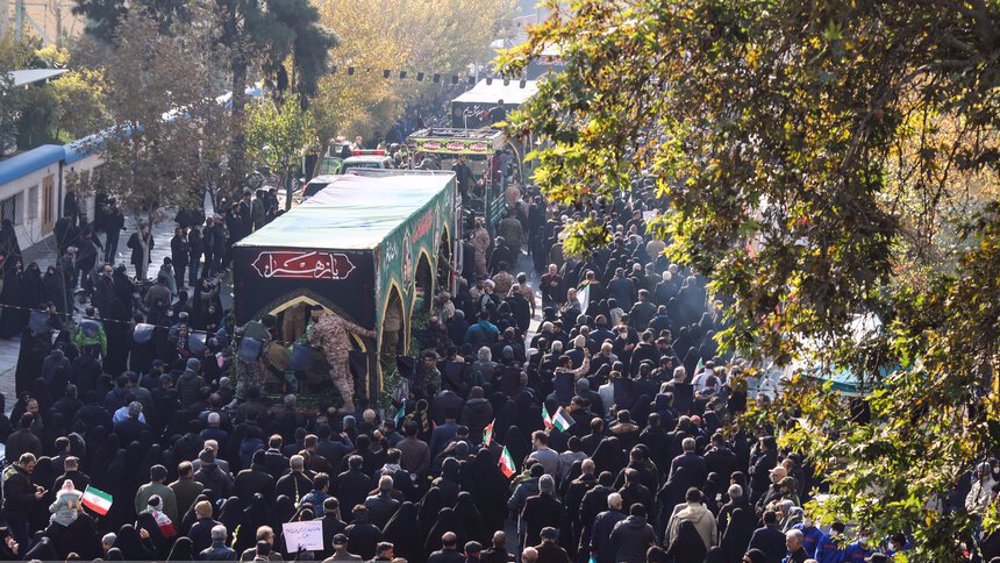Iran floods: New alerts issued as heavy rains continue
Iranian authorities have issued new emergency alerts and travel advisories as heavy rain and snowfall continue to cause flooding and disruptions in most parts of the country.
Morteza Salimi, the head of the Relief and Rescue Organization of the Iranian Red Crescent Society (IRCS), said Monday morning that floods have affected at least 23 of the country’s 31 provinces since heavy downpours began on March 19.
Estimates by government agencies suggest that the floods have taken the lives of at least 42 people and destroyed over 25,000 homes around the country.
Major floods have been reported in the provinces of Golestan, Mazandaran, Gilan, Kordestan, Fars, Northern Khorasan, Kermanshah, Khouzestan, Kohgiluyeh and Boyer-Ahmad as well as Sistan and Baluchestan.
It was reported on Monday morning that fresh floods are expected in at least nine provinces.
Strong rain and powerful winds are also expected to lash several cities on Monday and Tuesday after a new storm system moved into western Iran on Sunday, according to Iran's Meteorological Organization (IMRO).
IMRO has also warned eleven provinces to brace for strong rainstorms and the possible overflowing of rivers.
Tehran
In the capital Tehran, a city of around 12 million, people in 20 districts have received cautionary text messages that advised them to stay indoors and avoid unnessary trips on Monday.
At least five people were injured in the Farahzad Valley in northwestern Tehran after heavy precipitation caused a major rock fall on Monday.
Lorestan
In Lorestan province, people woke up to the sound of flood alarms that urged residents to immediately evacuate parts of the city and many rural areas as water levels in three major rivers rose dramatically, triggering flash floods.
Ahmad Moradpour, one of the province’s top officials, said at least 150,000 people had been asked to immediately evacuate as water had already started to close streets and engulf buildings in some areas.
Vice President Es'haq Jahangiri has traveled to the provincial center Khorram Abad to coordinate rescue efforts for people trapped in flood-hit areas.
Jahangiri was planning to make a stop in the neighboring Ilam province next but his flight could not take off due to bad weather.
Khuzestan
Officials in Khuzestan warned about the possibility of massive floods after weather forecasts showed that the provinces lying to its north were to witness heavy downpours over the next 24 hours, leading to heavy amounts of water moving downstream and potentially causing local rivers to overflow their banks.
Khuzestan is home to five major rivers, including Karun — Iran’s biggest.
Large dams across the province, including Karkheh Dam with a total capacity of 5.2 billion cubic meters, were near full and could not take more floodwaters. Officials have asked people residing in areas below dams to evacuate to avoid danger in case of an overflow.
Other regions
The western province of Kermanshah was pounded by heavy rain as of Sunday afternoon, with officials urging over 19,000 people living near rivers to leave their homes.
Heavy snow has also been reported in the western province of Hamedan. Initial reports suggested that several rural buildings had been destroyed due to heavy snowfall.
In the central province of Isfahan, officials warned that the 57-meter-high Golpaygan Dam, which can hold up to 36.5 million cubic meters of water, was overflowing.
Officials in Qazvin were also put on high alert as heavy rains continued to batter the province.
Travel advisory
Police have warned people against traveling to western and southern parts of Iran on Monday and Tuesday due to adverse weather conditions that have caused some rivers to break their banks and blocked major roads.
Nationwide rescue efforts by people, government agencies and armed forces to deliver aid to flood-affected areas continued on Monday.
Jahangiri said that all municipalities in major cities had been mobilized to help the relief operations using their resources.
Tehran-South railway shut down
Transport authorities announced Monday morning that rail travel from Tehran to the southern parts of the country had been suspended due to heavy rains and possible flood risks in Lorestan, which houses over 155 kilometers of the railway.
A number of flights have also been canceled.
'Next to impossible' to rescue patients from Gaza's Kamal Adwan Hospital: Director
VIDEO | Vietnam current prosperity
Report blames gasoil exports for shortage at Iranian power plants
VIDEO | Hind Rajab Foundation names Israeli war criminals vacationing after Gaza genocide
VIDEO | Australians rally for Gaza ahead of Christmas festivities
VIDEO | Attacks on Sana'a
Iran reports further drop in annual inflation rate in December
Israel indicts two settlers over suspected spying for Hezbollah











 This makes it easy to access the Press TV website
This makes it easy to access the Press TV website